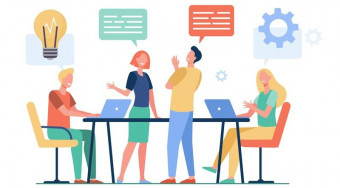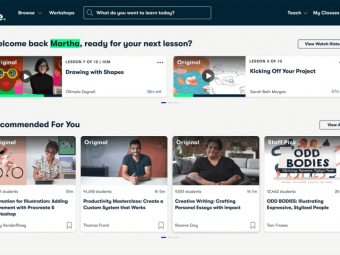How To Become A Real World Sql Server Dba
Tags: SQL Server
Your First Step In Becoming A Production SQL Server DBA
Last updated 2022-01-10 | 3.8
- A the end of this course you'll know what IT positions are starting roles for SQL Server DBAs- You'll learn how to sift through job descriptions specific to your level of expertise.
- You learn what a day in the life of a DBA looks like.
What you'll learn
* Requirements
* This course was designed for anyone with basic computer skills.* There are no prerequisites for this course.
* All the materials for the course are free and will be downloaded as part of our lessons.
Description
"One of the best courses I have taken on Udemy. Short and straight to the point. I have been trying to get into DBA job and have been watching long videos and this by far is THE best course to understand DBA jobs before going into more depth." -- Lopsang Gurung
Welcome to the Course
Congratulations are in order for having chosen to pursue the path of the DBA. YOU'VE made an EXCELLENT decision and one that I have no doubt will be very rewarding should you so wish.
As with any serious endeavor, YOU want to give YOURSELF the very best possible start in order to ensure things can move forward.
This course focuses on what YOU need to know in order to become a REAL WORLD SQL Server DBA.
SQL Server is one of the most complicated software offerings Microsoft has. It requires YOU have a foundation in networks, databases and programming. This wide range of skills is often difficult to obtain without rigorous learning and years of hands on experience.
The REWARDS YOU will OBTAIN are worth effort. Here are just a few. DBAs are very well compensated. YOU will get to work with some of the SMARTEST people in the IT world. You'll LEARN something EVERY DAY. The profession has been and will continue to be one of the highest growth professions.
SQL Server Database Administrators are responsible for the design, implementation, support and maintenance of SQL Server Databases. The role also includes architecting, building and scaling databases for future data growth and capacity.
DBA are also responsible for security, performance and availability of data to users and customers.
This course will give you some direction on how to begin your journey as a SQL Server DBA. I don't want to create any false promises. In addition to years of experience most Senior Level SQL Server resources have read a voluminous amount of product related material.
WE have to start somewhere and THIS COURSE will provide you with the REAL WORLD insight YOU need in order to start your journey.
If YOU are seriously interested in either starting out on the path to becoming a SQL Server Database Administrator the YOU'LL need two key ingredients. Experience and product knowledge. Experience might not be easy to get but it will be impossible if you don't have a very solid foundation in SQL Server.
ENROLL now. Let's get started!!!
Who this course is for:
- This course is a 101 level course. Anyone with basics computer skills can take this course.
- This course is not for accidental DBAs or junior level DBAs.
- If you are thinking about a career as a SQL Server DBA or developer then this course is for you.
Course content
7 sections • 46 lectures
This Course Is About How To Start Our DBA Journey Preview 01:26
Starting is often one of the hardest parts.
SQL Server is a massively complicated product.
Where do we start?
In this lecture we'll learn what's going to be covered in this course.
Is This Course For You? Should You Take This Course? Preview 02:39
Let's discuss if this course is for you.
I've Been A Production DBA For Over A Decade. Let Me Show You How To Start. Preview 00:47
A little about me.
The Truth About Your First Job. Think Windows Administrator or Developer. Preview 01:30
This is where you start.
What Is A Relational Database? How Do The Tables Relate To One Another? Preview 08:22
In it's most basic form a database is a collection of objects.
The most important being the table object.
The table object stores structured data.
Let's learn about the very basics in this lecture.
The ACID Properties. Pay Attention Here. Memorize The Bolded Definition. Preview 01:38
There's no shortcut on these.
In order to understand relational databases we have to fully understand the ACID properties.
It's one of the pillars relaional databases are built on.
The Various Jobs That Fall Under The SQL Server DBA Umbrella. Preview 03:26
A Look Into The Daily Routine. A Day In The Life Of A Production DBA. Preview 03:41
What Interest's You? The Two Forks In The Road. Preview 01:01
Let's Wrap Up This Section. A Brief Summary of What We've Learned. Preview 00:52
Just a quick overview of what we covered in the first section.
Section 1 Quiz
Let's Download SQL Server Express. The Free Version. Preview 07:13
All versions of SQL Server have free versions that have limitations.
It gives those who want to learn SQL Server a chance to work with most of the same functionality of enterprise versions.
This version is called SQL Server Express.
In this lecture we are going to learn how to download and install it.
What Are The Editions of SQL Server? Each Release Has Different Editions. Preview 00:19
With each release of SQL Server Microsoft will often have different editions of SQL Server.
When you are deciding on which edition to choose make sure you find our what the editions are for each version.
There is no guarantee SQL Server 2014 will have the same editions as SQL Server 2016 or SQL Server 2018.
The System Databases Preview 00:47
When you install Microsoft SQL Server, several system databases are automatically created on every SQL Server instance.
SQL Server Configuration Manager. A Definition and Some Terminology. Preview 00:39
The configuration manager allows us to restart services and manage protocols.
Section 2 Summary Preview 00:48
Let's wrap up what we've covered in this course.
Section 2 Quiz
Let's Walk Through The SQL Panes. Most DBAs Like Only Three. Preview 07:27
As SQL Server DBAs we will spend most of our time working inside SQL Server Management Studio or SSMS.
In this lecture we will learn the basics of manipulating our objects inside SSMS.
Table Basics Part 1 Preview 05:17
What is a table and how do we create one in SSMS and transact.
Table Basics Part 2 Preview 03:49
In this lesson we will continue to learn about our table object.
What Are Data Types. We Define Our Structured Data Using Data Types Preview 00:46
Let's learn about data types in this lesson.
SQL Server supplies a set of system data types that define all the types of data that can be used with SQL Server.
How Is Data Stored In SQL Server. Let's Talk About Pages and Extents. Preview 00:34
The fundamental unit of data storage in SQL Server is the page. The disk space allocated to a data file (.mdf or .ndf) in a database is logically divided into pages numbered contiguously from 0 to n. Disk I/O operations are performed at the page level. That is, SQL Server reads or writes whole data pages.
Section 3 Summary Preview 00:53
Let's wrap up what we've covered in this lesson.
Section 3 Quiz
Data Manipulation Language VS Data Definition Langague Preview 01:41
In this lecture we will discuss the tow kinds of transact-sql.
The Very Basics Of The SELECT Statement. This Is Where We Start. Preview 03:08
The SELECT statement is the most often used piece of code in SQL Server.
Let's learn what it does.
DML - The BIG 4. SELECT, UPDATE, INSERT, DELETE. Preview 05:14
DML stands for Data Manipulation Language.
There are only 4 core statements used for the majority of our transactions.
Let's cover what they are.
Section 4 Summary Preview 00:26
Let's wrap up what we've covered.
Section 4 Quiz
We First Need To Create A Login. Then Create The User At The Database Level Preview 07:51
In this lesson we are going to learn how to create logins at the server level then map those logins to databases at the database level.
Section 5 Summary Preview 00:38
Let's wrap up what we've covered.
Section 5 Quiz
Basic Database Architecture Preview 01:29
Let's cover the very basics of what a SQL Server database is. All SQL Server databases must have 2 files. Each database must have one data file and one log file.
What Are Recovery Models? Preview 01:25
All production databases should be in FULL recovery and transaction log backups should be in place. Let's take a look at what our options are here.
What Are The Backup Options For A SQL Server Database Preview 01:57
SQL Server has three major types of backups.
A full backup.
A differential backup.
A transaction log backup.
Let's discuss the different types in this lesson.
Why The Full Backup Is So Important Preview 01:05
Without a full backup there is no restore. This minute long audio is the very foundation to our restores.
Full Backup: Demonstration Preview 06:17
In this lecture let's demo the different kinds of backups. We will start with the full and then work our way to the differential and finally the transaction log backup.
Differential Backup: Demonstration Preview 04:07
It would be ideal to have have FULL backups nightly but as our databases grow into VLDBs (Very Large Databases), that isn't always possible.
Fortunately, we have differential backs to assist us.
Transaction Log Backup: Demonstration Preview 05:50
We start with a full backup then restore our transaction logs up to the point where the failure took place.
Transaction logs provide us with an up to the minute (if we set them up that way) ability to recover our databases.
Creating A Very Simple Maintenance Plan For Our Backups Preview 09:00
We have lots of ways to set up our backups but for those that are new to SQL Server, the wizard approach gives us a step by step GUI to configure them.
Removing Unwanted Backup and Log Files Preview 03:50
Companies have different retention policies. Many like the 3 days on disk approach. No matter what methodology you use you'll want to remove older .bak and .trn files.
Backup Strategies For Real World Boxes Preview 02:44
Let's talk about real world backup strategies.
Ideally, I like the idea of having FULL backups nightly. Sometime that's not possible so we have to craft a plan that's right for our environment.
Section 6 Summary Preview 00:48
Let's wrap up what we've covered in this section.
Section 6 Quiz
Congratulations and Thank You! Preview 00:13
Thank you for taking my course!!!








 This course includes:
This course includes:
![Flutter & Dart - The Complete Guide [2022 Edition]](https://img-c.udemycdn.com/course/100x100/1708340_7108_5.jpg)















